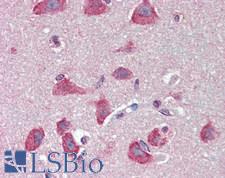Login
Registration enables users to use special features of this website, such as past
order histories, retained contact details for faster checkout, review submissions, and special promotions.
order histories, retained contact details for faster checkout, review submissions, and special promotions.
Forgot password?
Registration enables users to use special features of this website, such as past
order histories, retained contact details for faster checkout, review submissions, and special promotions.
order histories, retained contact details for faster checkout, review submissions, and special promotions.
Quick Order
Products
Antibodies
ELISA and Assay Kits
Research Areas
Infectious Disease
Resources
Purchasing
Reference Material
Contact Us
Location
Corporate Headquarters
Vector Laboratories, Inc.
6737 Mowry Ave
Newark, CA 94560
United States
Telephone Numbers
Customer Service: (800) 227-6666 / (650) 697-3600
Contact Us
Additional Contact Details
Login
Registration enables users to use special features of this website, such as past
order histories, retained contact details for faster checkout, review submissions, and special promotions.
order histories, retained contact details for faster checkout, review submissions, and special promotions.
Forgot password?
Registration enables users to use special features of this website, such as past
order histories, retained contact details for faster checkout, review submissions, and special promotions.
order histories, retained contact details for faster checkout, review submissions, and special promotions.
Quick Order
PathPlusTM ACHE / Acetylcholinesterase Antibodies
ACHE (acetylcholinesterase) is a primary cholinesterase that functions to terminate synaptic signal transmission by hydrolyzing acetylcholine at neuromuscular junctions and brain cholinergic synapses. It also constitutes the Yt blood group antigen on red blood cell membranes. Multiple alternatively spliced forms of ACHE are expressed separately in the brain, muscle and erythroid tissues. Dysregulation of ACHE can result in impaired neurotransmission when levels of ACHE are too high, while inhibition of ACHE can lead to muscular paralysis, bronchial constriction and asphyxiation. Direct inhibitors of ACHE include nerve agents and pesticides, while reverse inhibitors such as donepezil and rivastigmine can be used to improve cognitive function in neurodegenerative diseases like Alzheimer’s. In immunohistochemistry, ACHE has positive membranous and secretory staining in the brain, endocrine tissues, immune tissues, muscle, gastrointestinal tissues and some positivity in reproductive tissues.
References: BMJ. 1994 Apr 2; 308(6933): 868–869, PMID: 8173360; Front Neurosci. 2019 May 7;13:446, PMID: 31133787; Cell Tissue Res. 2006 Nov;326(2):655-69, PMID: 16802134;
2 PathPlusTM Antibodies


☰ Filters
Products
Antibodies
(2)
Type
Primary
(2)
Target
ACHE / Acetylcholinesterase
(2)
Reactivity
Human
(2)
Mouse
(2)
Rat
(2)
Application
IHC
(2)
IHC-P
(2)
WB
(2)
Peptide-ELISA
(1)
Host
rabbit
(2)
Product Group
PathPlus Neuro
(2)
Isotype
IgG
(2)
Clonality
polyclonal pc
(2)
Format
Unconjugated
(2)
Epitope
aa536-585
(1)
Publications
No
(2)

Neuroscience
ACHE / Acetylcholinesterase Rabbit anti-Human Polyclonal (aa536-585) Antibody
Mouse, Rat, Human
IHC, IHC-P, Peptide-ELISA, WB
Unconjugated
50 µl/$460

Neuroscience
ACHE / Acetylcholinesterase Rabbit anti-Human Polyclonal Antibody
Mouse, Rat, Human
IHC, IHC-P, WB
Unconjugated
50 µl/$375
Viewing 1-2
of 2
product results











